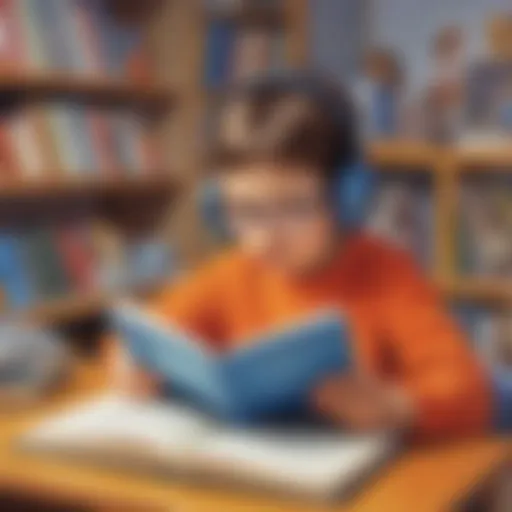Effective Reading Techniques for Young Learners
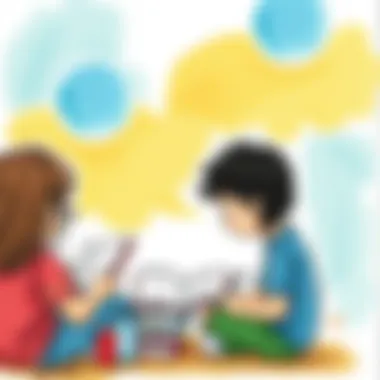
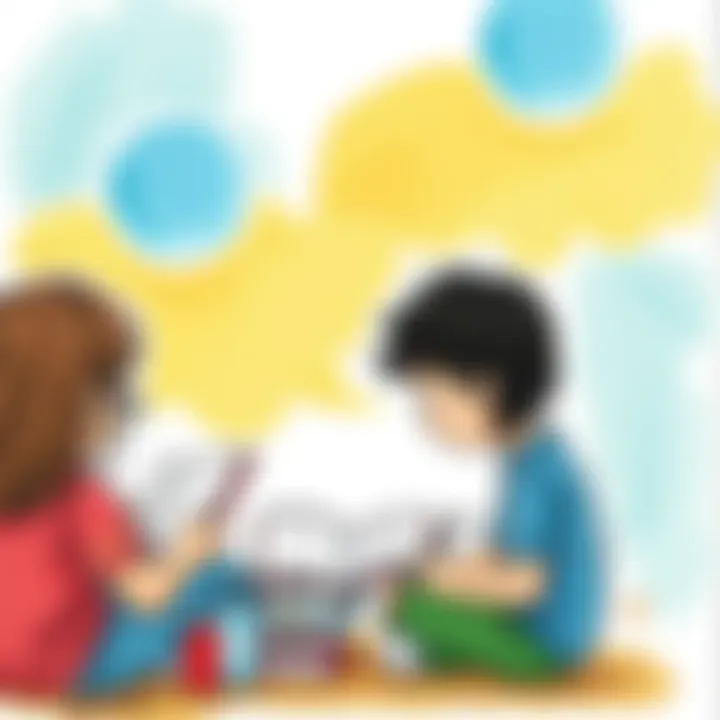
Intro
In the ever-evolving landscape of education, fostering a love for reading in young learners is a vital component of their development. For children between the ages of 5 and 12, the experience of reading can open doors to imaginations and worlds beyond their own. However, it’s not just about books and words on a page; it’s about engaging their curiosity and guiding them through effective techniques and strategies that can enhance comprehension. This article will serve as a comprehensive guide, walking parents, caregivers, and educators through a variety of methods tailored to young readers, all designed to make literature a delightful and enriching experience.
Reading can sometimes feel like a daunting task for some kids, which is where innovative strategies come into play. Whether it’s through creative activities, fun quizzes, or fact-based articles, each facet of this guide is aimed at sparking interest and promoting literacy.
As we delve into these sections, the significance of age-appropriate techniques will be highlighted, showcasing how the right approach can cultivate an enduring passion for reading in children. The goal is simple but powerful: to not only improve reading skills but also nurture a lifelong enjoyment of stories and knowledge.
Foreword to Reading Techniques and Strategies
Reading is more than just recognizing words on a page; it’s a robust journey that shapes a child’s understanding of the world. At the core of this journey lies effective reading techniques and strategies, pivotal for guiding young learners through the intricate landscape of language and literature. This article aims to dismantle the barriers to reading, helping children ages 5 to 12 to not only read but enjoy what their eyes are scanning.
The Importance of Reading in Early Childhood
The early years of a child's life are not just formative; they are also foundational. The human brain undergoes significant development during these years, and reading fosters this growth spectacularly. When children read, they engage their imaginations and enhance their cognitive capabilities. Reports indicate children who read regularly at a young age develop superior vocabulary and comprehension skills compared to their peers. Reading in early childhood can:
- Expand a child's vocabulary quicker than conversations alone.
- Cultivate empathy by allowing children to see the world through different lenses.
- Enhance critical thinking skills as they learn to interpret statements and draw conclusions.
Furthermore, the act of reading together can cement relationships between parents and children, providing wonderful opportunities for discussions and bonding moments that they will cherish.
Overview of Effective Reading Techniques
When talking about reading techniques, one size doesn’t fit all. Different young learners will respond uniquely to various methods, so diversity in approach is essential. A few effective techniques can be summarized as follows:
- Phonics Instruction: This method centers on the relationship between sounds and their corresponding letters, making it easier for children to decode new words.
- Guided Reading: Here, educators work in small groups, catering to varying reading abilities, which allows for direct teacher interaction.
- Visual Literacy: This involves understanding illustrations and graphics in books, which can support comprehension and enhance engagement through visuals rather than text alone.
Effective reading strategies not only boost comprehension but also ignite a lifelong passion for books in children.
Building a framework of supportive reading techniques helps children learn at their own pace while enjoying the learning process. This approach helps them to internalize what they read and relates to a broader understanding of content - an essential skill in today’s world, where information is king.
In this article, we will delve deeper into the various techniques available, explore engaging activities, and provide tips tailored for parents and educators to foster an enriching reading environment for young learners.
Phonics-Based Techniques
Phonics-based techniques stand as a cornerstone in teaching reading to young learners. By focusing on the relationship between sounds and their written symbols, phonics strategies enhance children's ability to decode words, ultimately making them more confident readers. These approaches are beneficial because they serve as the initial building blocks of literacy, allowing children to grasp the structural components of languages. A solid understanding of phonics often leads to improved reading fluency and comprehension.
Understanding the Basics of Phonics
At its core, phonics education involves teaching children how letters or groups of letters correspond to sounds, also known as phonemes. This method can seem quite straightforward, but it carries profound implications for a child's future reading success.
Children first learn the individual sounds associated with letters, beginning with simple A, B, C phonemes. As they progress, they explore digraphs (two letters forming one sound) and blends, enhancing their skills gradually. Understanding these basics allows young readers to break down unfamiliar words into manageable parts, fostering their independence in reading. Importantly, phonics education also nurtures listening skills which are vital for language acquisition.
Phonics Games to Foster Learning
Engaging games create an interactive learning atmosphere and can significantly enhance phonics lessons. Phonics gaming not only makes learning fun but also reinforces skills through playful practice. Here, we delve into two prominent types: interactive board games and matching activities.
Interactive Board Games
Interactive board games present a dynamic way to reinforce phonics skills. Often characterized by playful competition and collaboration, these games encourage kids to actively engage with sounds and letters. One key feature is the tactile aspect—moving pieces around the board provides both kinesthetic and visual learning opportunities. This can be particularly beneficial for young learners who may struggle with traditional reading methods.
One popular choice, Scrabble Junior, invites players to spell out words, making use of letter tiles that illustrate phonemic principles. Although board games can require a bit of setup and supervision, the immersive experiences they provide often lead to enhanced learning. Furthermore, kids learn valuable social skills like taking turns and playing fair while honing their reading abilities.
Matching Activities
Matching activities are another effective way to bolster phonics skills. These tasks often involve cards that pair letters with images or words that begin with those letters. One popular aspect of matching is its ability to cater to various skill levels; simpler matches can start with single letters and images, while advanced activities can incorporate entire words or sounds.
The uniqueness of matching activities lies in their versatility. They can be easily adapted for individual or group work settings, fostering collaborative learning among peers. While these activities can be less interactive than board games, they offer the advantage of quiet reflection and concentration, allowing children to pace their own learning.
Engaging with phonics through games and interactive activities motivates young readers, making the learning experience enjoyable.
Overall, phonics-based techniques form a crucial part of the literacy puzzle for young learners. They aid not just in decoding text but also in building confidence, a love for reading, and the foundational skills necessary for long-term literacy development.
Guided Reading Practices
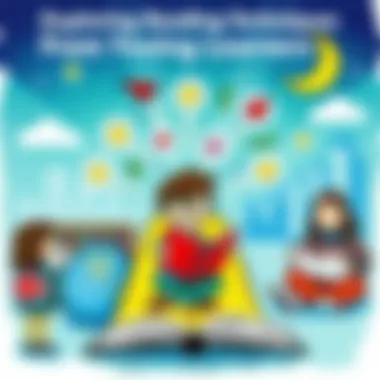
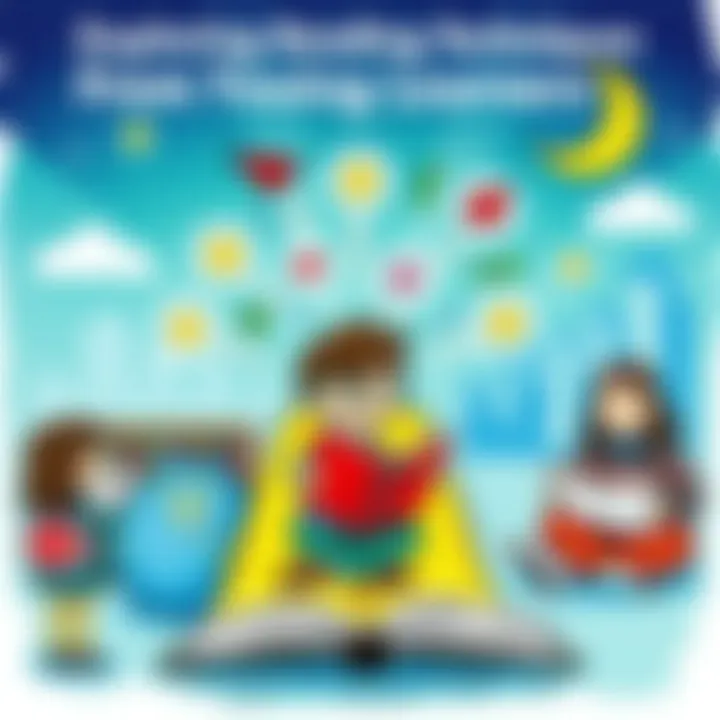
Guided reading is a teaching approach that allows educators to work closely with small groups of students, tailoring reading sessions to their specific needs and levels. This method emphasizes the importance of direct instruction, enabling children to progress naturally through various stages of reading development. Through guided reading practices, students gain more than just fluency; they develop comprehension skills, learn to decode texts effectively, and foster a love for reading.
What is Guided Reading?
At its core, guided reading is about scaffolding students' learning as they navigate through texts that are slightly beyond their independent reading level. Think of it like taking a stroll through a familiar neighborhood, but every now and then, taking a detour to explore new paths. In a guided reading session, the teacher selects a book that offers the right amount of challenge while still being approachable. Typically, a small group of four to six students is formed, allowing for intimate interaction and discussion.
Guided reading comprises several key elements:
- Text Selection: Choosing the right book is crucial. It should harmonize with students' interests while providing instructional value.
- Student Assessment: Before diving into guided reading, assess students' reading levels. This helps in forming groups based on similarity in reading capabilities.
- Focus on Strategies: Teachers model strategies such as predicting what's going to happen next in the text, questioning key details, and summarizing parts of the story. These strategies not only build comprehension but also cultivate critical thinking.
In sum, guided reading serves as an effective bridge connecting children’s current abilities with future reading success, paving the way for deeper understanding and enjoyment of literature.
Implementing Guided Reading in the Classroom
To make guided reading a success in the classroom, there are several steps educators can follow:
- Organize Learning Groups: Use assessment data to create groups that reach similar reading levels. This ensures that each child feels a sense of belonging and accomplishment.
- Plan and Prepare: Choose texts that vary in genre and topic, catering to students' interests. Prepare discussion questions and activities that align with the reading, making sure they provoke thought and engagement.
- Create Dynamic Sessions: Each session should include reading aloud, shared reading, and some time for independent reading. Integrate different forms of media such as audio or visual aids to enrich the experience.
- Encourage Interaction: Allow time for students to discuss their thoughts and feelings about the text. Encourage them to express their views, whether it be through chat or by jotting down responses in a reading journal.
- Monitor and Adapt: As a teacher, keep track of students’ progress and adapt groups or texts when necessary. This ensures that learners are always challenged, but not overwhelmed.
Creating a supportive environment where students can learn from each other is vital. The magic of guided reading lies not just in the act of reading itself, but in the connections made between the text, the teacher, and the students.
"Teaching reading is about building a community of learners; guided reading creates a powerful forum for collaboration and growth."
In the end, guided reading is more than just a method. It’s a journey of exploration that allows young learners to discover the richness of language and literature, one page at a time.
For additional resources on guided reading techniques, you can explore resources like Reading Rockets and Scholastic.
Reading Comprehension Strategies
Reading comprehension is critical for young learners. It's the bridge that connects the words on a page to the thoughts and meanings they create. Without this understanding, reading can become a mechanical process devoid of joy or insight. Thus, developing strong reading comprehension skills early on can lead to improved academic performance across subjects. It also helps children make connections to their experiences and ideas, fostering a lifelong love for learning.
Noting Key Ideas and Details
One effective strategy for improving reading comprehension involves teaching children to note key ideas and details as they read. This tactic encourages active engagement with the text. Young readers learn to identify the main ideas, which act as the backbone of the narrative or argument.
When children summarize what they’ve read, they think critically about the material. Here are some approaches to help children master this skill:
- Highlighting and Underlining: Encourage kids to underline or highlight sentences that seem important. This exercise helps them focus on significant details.
- Note-taking: Teach children how to take notes as they read. They can jot down main points or interesting facts in the margins of their books or on a separate sheet.
- Discussing with Peers: Group discussions can deepen comprehension. Encourage children to talk with their classmates about their notes and observations.
The process of sifting through text to pull out meaningful details not only enhances retention but also allows children to engage with the reading material on a deeper level.
Encouraging Predictions and Inferences
Another key component in bolstering reading comprehension is the practice of encouraging predictions and inferences. This strategy helps a child develop a more comprehensive understanding of the text by stimulating their imagination and critical thinking.
Here’s how you can promote this strategy:
- Pre-reading Activities: Before starting a new book, ask children to look at the cover and read the blurb. What do they think will happen in the story? This sets the stage for their engagement.
- Making Inferences: Teach children to read between the lines. Ask questions like, "What do you think the character feels right now?" or "Why do you think this event is important?" This encourages them to draw conclusions based on contextual clues, not just the text directly.
- Prediction Checkpoints: While reading, pause and ask children what they believe will happen next. This helps them stay alert and engaged with the storyline.
Epilogue
Incorporating these strategies into reading practices helps young learners enhance their comprehension skills. Noting key ideas and encouraging predictions create active, curious readers. As children develop their ability to understand and interpret texts deeply, they are more likely to enjoy reading and pursue it as a lifelong skill. Equipping parents and educators with these techniques can make a world of difference in a child's educational journey.
"When you read, you can live a thousand lives before you die." - George R.R. Martin
For more insights on reading strategies, check out resources like Reading Rockets or PBS LearningMedia.
Visual Literacy in Reading
Visual literacy is more than just a modern buzzword; it’s a critical skill for young learners as they dive into the depths of reading. In an age where digital images, videos, and infographics are ubiquitous, children must be equipped to interpret and analyze visuals alongside written text. This integration not only improves comprehension but also makes reading more engaging. It encourages children to think critically and to connect various modalities of information, fostering a richer learning experience.
Moreover, visual literacy helps students navigate complex texts, understanding how illustrations can add layers of meaning. When children learn to recognize and interpret visual cues, they become better readers, capable of drawing inferences and making predictions that help them understand the story's nuances. Thus, prioritizing visual literacy is essential for developing well-rounded readers who thrive in an increasingly visual world.
The Role of Illustrations in Text


Illustrations play a pivotal role in children’s books, often capturing the essence of a narrative that words might not fully convey. They provide context, evoke emotions, and can even clarify difficult concepts. For instance, a story about a zoo can become vivid and relatable with colorful pictures of animals, sparking interest and imagination.
In addition, illustrations serve as a bridge that connects young readers to the text. When children encounter images alongside written language, they can better understand the plot and characters. This visual engagement helps to build a narrative thread that connects events and themes, enhancing their overall comprehension. Ultimately, a rich visual element in reading materials can inspire a love for literature and encourage children to explore diverse stories.
Use of Graphic Organizers
Graphic organizers are powerful tools for young learners, aiding in visualizing concepts and organizing information effectively. These tools can simplify complex ideas, making them easier to grasp. Whether it’s breaking down a story into essential elements or comparing characters, graphic organizers engage children in actively constructing knowledge.
Venn Diagrams
Venn diagrams are excellent for comparing and contrasting. In the context of reading, they help children understand differences and similarities between characters, settings, or events. A key characteristic of Venn diagrams is their simple design: overlapping circles represent shared traits while separate sections show unique features. This format easily captivates students' attention, making it a popular choice in classrooms.
The unique feature of Venn diagrams is their visual appeal and clarity. Children can quickly see connections, leading to deeper understanding. However, one disadvantage might be that if not guided properly, students could focus so much on completing the diagram that they overlook critical analysis of the material. Balance is key here.
Story Maps
Story maps serve as another effective graphic organizer, assisting kids in breaking down the structure of a narrative. They guide them to identify critical elements like the setting, characters, conflict, and resolution. This clarity helps students see how different parts of the story come together, enhancing their comprehension and retention of information.
What makes story maps particularly beneficial is their structured approach. They provide a visual framework that organizes thoughts systematically, making storytelling more manageable. Students can also learn to create their own, fostering creativity. Moreover, while story maps encourage engagement, a potential drawback is that younger learners might struggle with filling out all the sections without adequate support, which could frustrate them. Thus, teachers should offer plenty of guidance before students embark on this independent journey.
"Visual literacy allows young learners to thrive in a dynamic world, making connections between stories, illustrations, and their own experiences."
Overall, focusing on visual literacy in reading not only enriches comprehension but also instills a passion for literature. By utilizing illustrations and graphic organizers like Venn diagrams and story maps, educators can create a more stimulating learning environment that benefits young readers.
Encouraging a Love for Reading
Fostering a love for reading in young learners is akin to planting a seed that, with care and dedication, might grow into a lifelong passion. When children find joy in books, they develop not just comprehension skills but also a broader understanding of the world around them. This journey of enjoying literature serves multiple purposes, from enhancing vocabulary to improving critical thinking skills. Moreover, instilling a love for reading transforms the learning process, making it less about obligation and more about exploration and discovery.
Choosing the Right Books
When it comes to nurturing a love for reading, the selection of books is paramount. Picking titles that resonate with a child's interests can spark their curiosity. For instance, a child fascinated by dinosaurs might find joy in reading "National Geographic Little Kids First Big Book of Dinosaurs” by Catherine D. Hughes, where factual information is presented alongside vivid illustrations. Here are some important considerations when choosing the right books:
- Know their Interests: A child who loves animals may prefer stories about adventures with pets or wild animals. Tailoring selections to their personal inclinations helps keep the excitement alive.
- Age-Appropriate Content: It’s essential to select books that suit a child’s reading level. Ensuring they are not overwhelmed by complex phrases while keeping them challenged with new vocabulary can help in building confidence.
- Diverse Genres: Introduce kids to a variety of genres, whether it be fairy tales, mysteries, or non-fiction. This not only keeps their reading experience fresh but also broadens their horizon.
Through these efforts, young readers can discover myriad worlds just waiting to be explored.
Creating a Reading Routine
Establishing a consistent reading routine can significantly enhance a child's reading experience. It sets the stage for what to expect and lets children know that reading is a valued part of their day. Here are a few strategies for creating a reading routine:
- Consistency is Key: Designate a specific time each day for reading. Whether it’s after dinner or before bed, carving out this time sends a message that reading is important and deserves attention.
- Design a Cozy Space: Create a reading nook at home that’s comfortable and inviting. A small area with cushions or soft lighting can make a world of difference in how children perceive reading time.
- Set Goals Together: Working together with your child to set achievable reading goals can be motivating. Perhaps they aim to read five books in a month, or maybe they keep track of the number of pages they read. This involvement can increase their commitment.
In short, building a reading routine creates a sacred space for stories, ensuring that each book opens a new door, leading to boundless adventures and learning opportunities.
“Reading is to the mind what exercise is to the body.” – Joseph Addison
By focusing on the right literature and establishing a reading routine, parents and educators can inspire young learners not just to read, but to truly embrace the joy that comes from diving into a good book, making literacy an integral part of their lives.
Integrating Technology into Reading
In the rapidly changing landscape of education, integrating technology into reading practices is anything but trivial. For young learners, technology can open doors to novel ways of engaging with texts and developing crucial reading skills. This section delves into the tools and methods that can make reading less daunting and more interactive for children aged 5 to 12. By leveraging technology, we can not only enhance comprehension but also instill an enduring love for reading.
Educational Apps for Reading
The rise of educational apps tailored to reading has transformed how children approach text. These applications often combine play with learning, allowing for an immersive experience. Here are some key aspects to consider when evaluating these apps:
- Interactive Elements: Many educational apps incorporate games and quizzes that make learning fun. For instance, apps like Starfall offer engaging animations that accompany phonics lessons, turning what might seem like a chore into an exciting adventure.
- Adaptive Learning: A lot of these applications can tailor readings based on the child's progress. This adaptability ensures that young readers are always challenged yet not overwhelmed, making the learning journey smoother.
- Accessibility: Many families now own tablets or smartphones. Educational apps are often more accessible than traditional printed material, giving kids the ability to read and learn anytime, anywhere.
When it comes to selecting apps, look for those that offer a balance of educational content and enjoyable gameplay. Parental recommendations and reviews on platforms such as Common Sense Media can guide you in the right direction.
Using E-Books and Audiobooks
With the advent of e-books and audiobooks, children can now explore literature in diverse formats, broadening their exposure to different styles and genres. The benefits of these formats are manifold:


- Enhanced Engagement: E-books often come with features like animations, sound effects, and clickable sequences that captivate young readers. These interactive capabilities can promote further interest in the storyline.
- Multisensory Learning: Audiobooks are beneficial for auditory learners. Children can listen to stories while following along with the text, reinforcing word recognition and pronunciation.
- Convenience: The ability to carry multiple books on a tablet or e-reader reduces clutter and makes reading on-the-go easier. Children can easily switch from a classic tale to a newly released story without the hassle of physical books.
For those considering introducing their kids to e-books or audiobooks, platforms like Audible and Libby offer vast selections tailored to younger audiences. Many public libraries also provide free access to these resources, making it an economical option for families.
“Technology doesn't just make reading more accessible; it creates entire new worlds that children can explore.”
Parental Involvement in Reading
Parental involvement in reading is not just a side note in the journey of a child's literacy development – it is often the very backbone of successful reading habits. Children, especially from ages 5 to 12, thrive on the encouragement and support they receive from their families. This active participation can take many forms, from setting up dedicated reading times to choosing books together. The relationship between a child's reading skill development and the engagement of parents is backed by several research findings, indicating that children with involved parents are generally more proficient readers.
When parents invest time in reading with their children, the benefits are manifold. Firstly, it fosters a love for literature which is invaluable as children grow. Instead of viewing reading as a mere academic exercise, it becomes an enjoyable pastime. Secondly, this involvement helps to reinforce the skills being taught in school. Parents can extend phonics strategies or comprehension lessons through at-home discussions or activities, ensuring that what the child learns in class clicks more firmly into place. Moreover, parents act as role models; by seeing their parents read, children are likely to mimic these behaviors and develop a similar passion for books. In this light, parental involvement is not just beneficial but essential for nurturing competent and enthusiastic readers.
Strategies for Parents
There are various strategies that parents can employ to be more involved in their child’s reading journey. Here’s a concise breakdown:
- Read Aloud Together: Set aside time every day to read with your child. This not only improves vocabulary but also allows parents to engage with their child's interests and emotions regarding stories.
- Make Storytime Interactive: Ask open-ended questions about the plot or characters. This encourages children to think critically and express their thoughts, which is equally crucial for comprehension.
- Incorporate Variety: Offer a rich array of reading materials – from fiction and non-fiction to magazines and digital content. This variety keeps the experience fresh and engaging.
- Set Reading Goals: Encourage your child to read a certain number of books each month, or join reading programs that challenge them to explore different genres. Celebrate small victories, creating excitement around their reading accomplishments.
- Discuss Books: After completing a book, sit down and have a heart-to-heart. Discuss what they liked or disliked and what they learned. This solidifies understanding and stimulates their analytical thinking.
Building a Child's Reading Environment at Home
Creating a conducive reading environment at home plays a pivotal role in maintaining a child’s interest in reading. Here are some crucial aspects to consider:
- Designate a Reading Space: Make a cozy nook in the house that is dedicated to reading. Fill it with soft pillows and good lighting. This signals to the child that this is their special place to escape into stories.
- Accessible Books: A range of books should be within easy reach. Utilize a bookshelf or simply stack them in a designated area. Ensure the selection is age-appropriate, yet challenging to tune into varying interests.
- Include Reading Materials: Encourage variety beyond just books. Include comics, puzzles, and even educational games. These elements can intersperse learning with fun, preventing reading from becoming monotonous.
- Limit Distractions: Where possible, create a quiet space that minimizes interruptions. Turning off electronic devices during designated reading times can help the child concentrate solely on the material.
- Showcase Their Favorites: Create a wall or a bulletin board to showcase their favorites. Displaying achievements, such as the number of books read, reinforces pride in their progress and motivates them to continue.
Research indicates that parental involvement significantly improves children's reading skills and motivation. Making reading a shared activity can transform it into a joyful and enriching experience.
Utilizing these strategies can transform the landscape of a child's reading abilities while also instilling a lifelong love for books. As parents, the direct impact of these efforts might not be immediately noticeable, but over time, they build a solid foundation for children's literacy and learning.
Assessing Reading Skills
Assessing reading skills forms the backbone of effective learning throughout a child's educational journey, especially in elementary school. Understanding where a child stands in their reading abilities is not just about ticking boxes on a curriculum checklist; it’s about tailoring learning experiences to meet their specific needs.
Why Assessment Matters
When teachers and parents assess reading skills, they gather invaluable insights. This process highlights strengths and identifies areas that might require more focus. Think of it as a compass in a vast forest; it helps guide children through the sometimes confusing landscape of language learning. Without proper assessment, kids may end up lost, lacking the support they need to grow.
Tools for Assessing Reading Levels
To determine a child’s reading proficiency, various tools can be employed, each with unique advantages. Here are some widely used methods:
- Running Records: This involves tracking a child’s reading through observation and notes. Teachers can see the child's fluency and comprehension in real-time.
- Informal Reading Inventories (IRIs): These are structured assessments that include various texts suited for different levels. They usually comprise comprehension checks too, which give a more nuanced view of a child’s understanding.
- Standardized Tests: While sometimes criticized for being impersonal, standardized tests can provide a baseline against broader educational benchmarks. However, they shouldn't be the only measure.
- Reading Logs: Encourage children to keep logs of their reading habits. Entries can reveal interests, frequency of reading, and even preferences in genres.
"Effective tools not only inform but inspire educators and parents to encourage reading growth."
Importance of Progress Monitoring
After assessment, the next crucial step is progress monitoring. Consistently tracking a child's reading development helps maintain focus on growth and improvement. This process allows educators and parents to:
- Adjust Instruction: If a child is struggling with certain phonics patterns, teachers can pivot their teaching methods to focus on those areas in real-time instead of waiting for a term-end assessment.
- Celebrate Growth: Notice small improvements? Celebrating these victories can motivate children to keep engaging with reading. Building a culture of positivity around their reading journey is vital.
- Tailor Support: Whether through additional resources or modifications in reading assignments, effective monitoring supports uniquely tailored approaches.
Ultimately, by investing time in assessing and monitoring reading skills, we plant the seeds for a deeper understanding of language and literature in young minds. With regular, thoughtful assessment, we ensure that the journey through reading is both fruitful and enjoyable for every child.
Culmination and Future Directions
As we draw the curtains on our exploration of reading techniques and strategies for young learners, it’s essential to reflect on the multifaceted nature of reading itself. The importance of creating a supportive and engaging reading environment cannot be overstated. The tools and methods discussed throughout this article serve as stepping stones, not just for improved literacy but for developing a lifelong appreciation for literature.
Recap of Effective Reading Techniques
To encapsulate the essence of effective reading strategies, let’s revisit some key approaches:
- Phonics-Based Techniques: The foundation of reading begins here. Understanding the letter sounds and how they combine to form words is crucial. When children can decode words, they gain confidence and the ability to tackle more complex texts.
- Guided Reading practices offer a structured approach, allowing teachers to support children at their individual reading levels. This personalized attention can significantly enhance comprehension skills.
- Reading Comprehension Strategies: Noting key ideas, making predictions, and drawing inferences are vital skills that promote deeper understanding. These strategies teach children to think critically about what they read, promoting active engagement.
- Visual Literacy: Acknowledging the role of illustrations and graphic organizers helps children connect visual and textual information, thereby enriching their overall reading experience.
- Integrating Technology: With the rise of digital tools, educational apps and e-books have transformed traditional reading. These resources can motivate children and provide diverse ways to approach literature.
This overview emphasizes that there’s no one-size-fits-all in reading instruction. Tailoring these techniques to fit individual needs makes learning more effective and enjoyable.
The Journey towards Lifelong Reading
Finally, nurturing a love for reading is a journey that extends beyond elementary school years. The foundation laid in these formative years sets the stage for a lifetime of exploration through books. Encouraging regular reading habits, exposing children to various genres, and engaging them in discussions about texts helps cultivate an intrinsic motivation to read.
Parents, educators, and caregivers play an integral role in this journey. Simple acts, such as visiting libraries, organizing reading events, or just having good ol’ book chat around the dinner table, can spark a child’s curiosity and passion for reading. The ultimate aim is not just to teach children how to read but to inspire them to find joy in stories and knowledge that books offer.
"Reading is to the mind what exercise is to the body." This quote resonates profoundly, suggesting that just as physical activity builds strength, reading develops mental agility and creativity through exposure to diverse thoughts and ideas.

